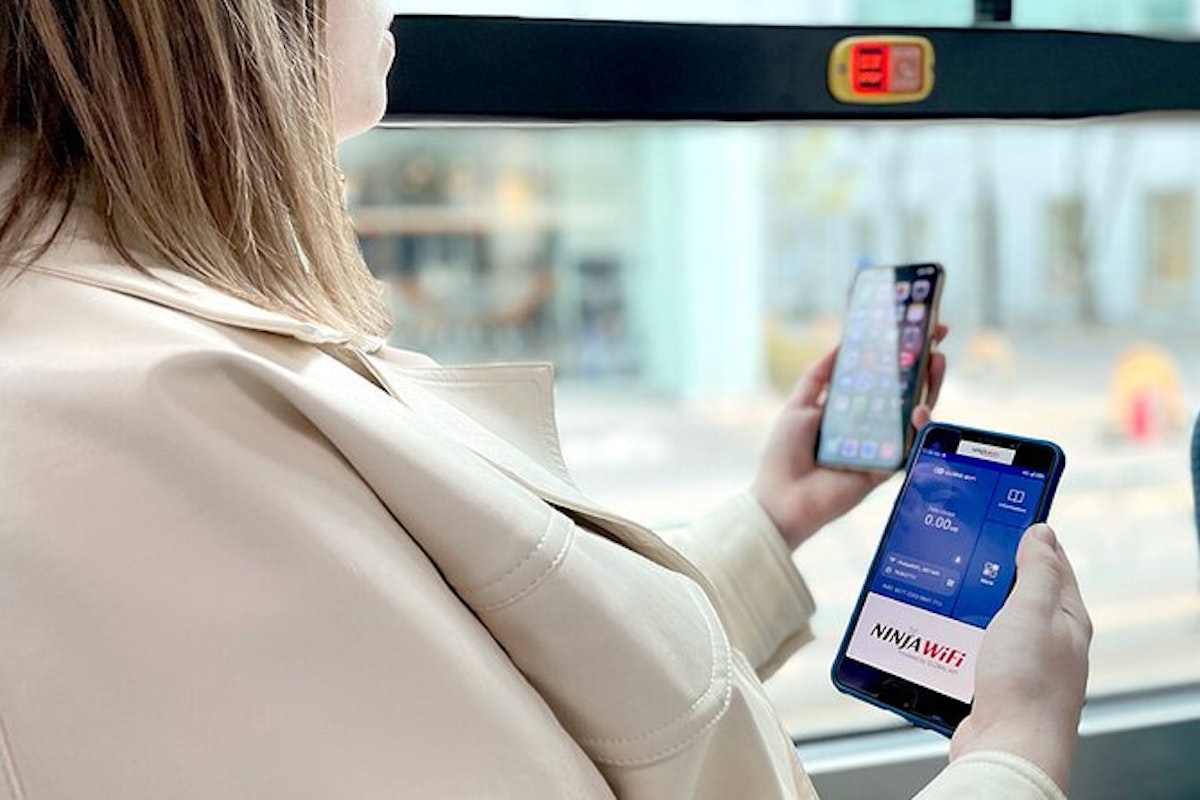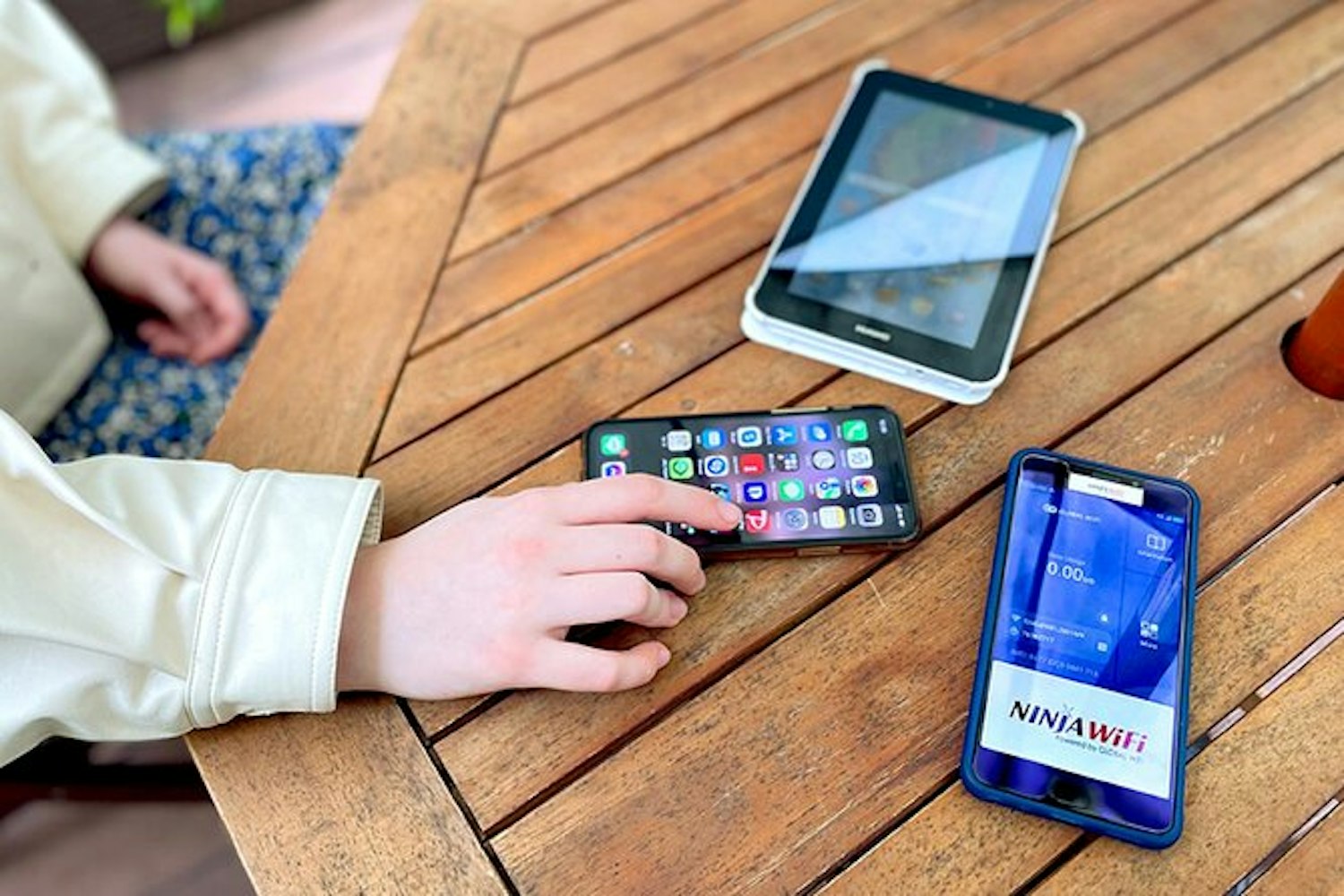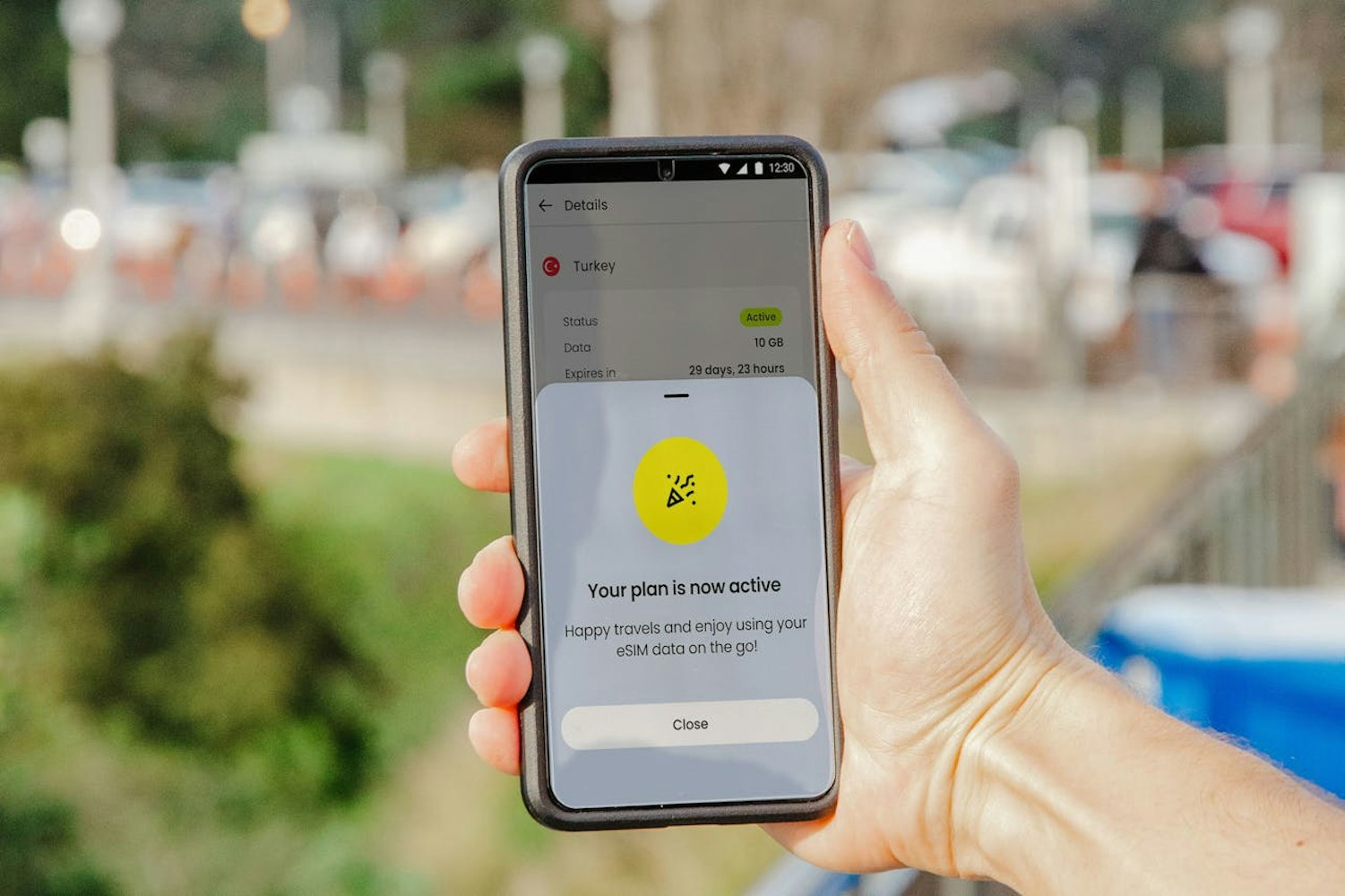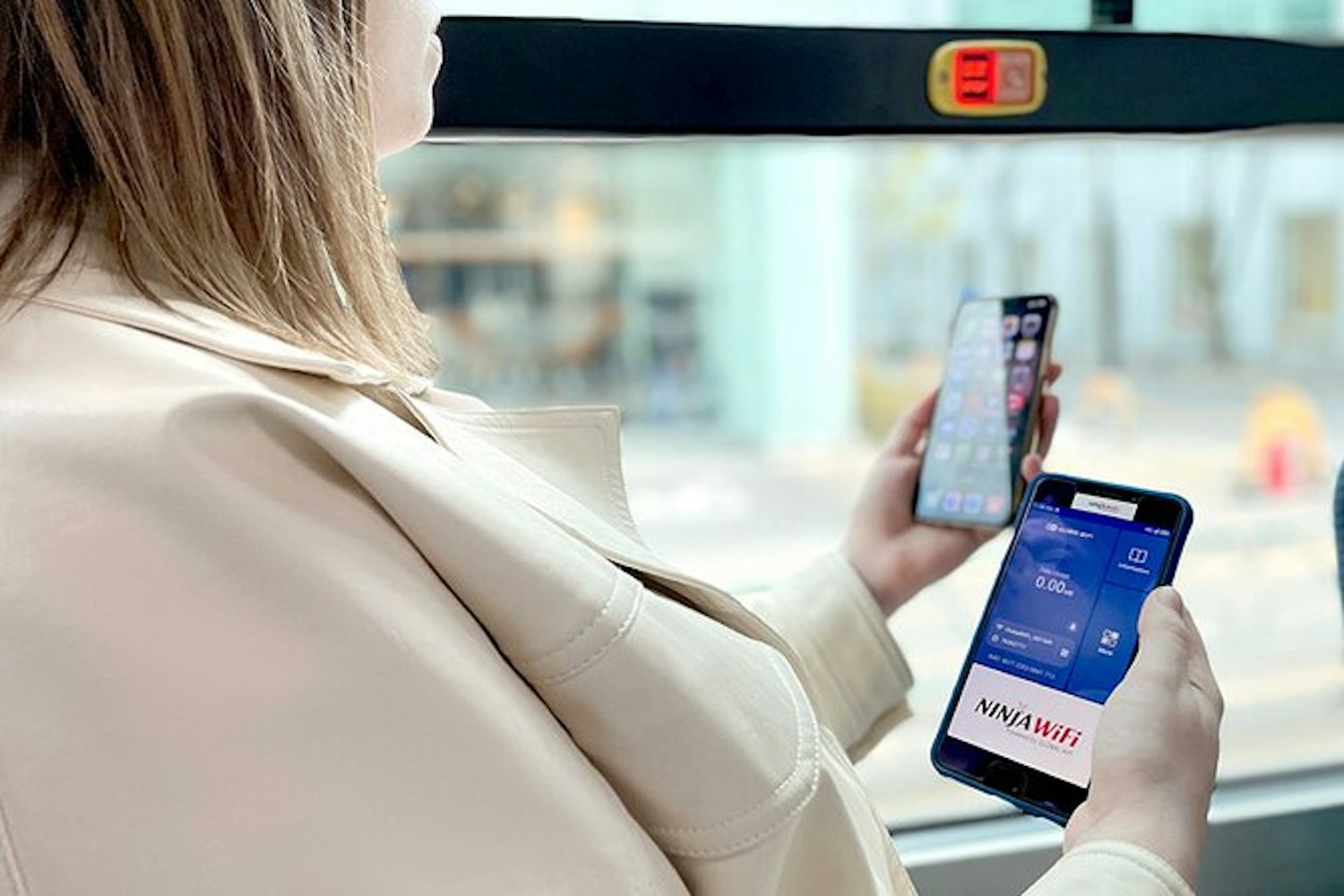

Planning a trip to Japan and wondering how you’ll stay connected? You’ve probably come across two popular options: pocket Wi-Fi and eSIM. Both are great ways to get internet on the go, but which one is actually better for your trip? Should you rent a pocket Wi-Fi router or just install an eSIM on your phone before you fly?
Japan is super connected, with fast mobile networks almost everywhere, but choosing the right option can make your life way easier while you explore temples, eat sushi, or get lost in Tokyo. Whether you're traveling solo, with a partner, or in a group, this guide breaks down everything you need to know about pocket Wi-Fi vs eSIM in Japan.
Let’s dive in and figure out how to stay online in Japan the smart way.

Pocket Wi-Fi is a small, portable device that acts like a personal Wi-Fi hotspot. It connects to Japan’s mobile networks and lets you access the internet on your phone, laptop, or tablet. You rent these devices from companies at the airport, hotels, or online before your trip. Once you pick it up, you turn it on, connect your devices, and you’re good to go.
Pocket Wi-Fi is popular because it’s straightforward. You don’t need to mess with your phone’s settings or worry about compatibility. Most providers in Japan offer plans with generous data limits, often 1GB to 3GB per day, which is plenty for most travelers. You can connect multiple devices at once, making it great for groups or families. When your trip is over, you return the device, usually at the airport or by mail.
An eSIM is a digital SIM card embedded in your phone. Instead of inserting a physical card, you download a plan from a provider, activate it, and connect to Japan’s mobile networks. It’s all done through your phone’s settings, so there’s no need to carry extra devices. eSIMs are newer but gaining traction fast, especially for tech-savvy travelers.
To use an eSIM in Japan, your phone needs to support eSIM technology. Most modern smartphones, like iPhones (XR and newer) or recent Android models, do. You buy a plan from providers like Airalo, Ubigi, or Mobal, scan a QR code or follow activation steps, and you’re online. Plans vary, with options for daily data (500MB to 2GB) or fixed amounts for your entire trip.
eSIMs are convenient because they’re entirely digital. No waiting at the airport to pick up a device, and no returning anything when you leave. You just activate and go. Plus, you can keep your home SIM active for calls or texts while using the eSIM for data.

When it comes to getting online quickly, both options are user-friendly, but they cater to different vibes. Pocket Wi-Fi is like renting a car: you pick it up, use it, and return it. Most providers, like Japan WiFi or Ninja WiFi, let you order online and grab the device at the airport. Setup is as easy as turning it on and entering a password. The catch? You have to carry it around, charge it daily, and remember to return it. Forgetting to drop it off or losing it can mean extra fees.
eSIMs, on the other hand, are like downloading an app. You buy a plan online, scan a code, and you’re set. No waiting at the airport or dealing with extra gear. It’s all in your phone, which is already glued to your hand. The downside is that you need a compatible phone, and setting it up might feel tricky if you’re not tech-savvy. Plus, you’ll need Wi-Fi or data to activate it, so plan ahead if you’re buying it on arrival.
For solo travelers or those who love simplicity, eSIMs feel seamless. If you’re traveling with a group or don’t mind carrying a device, pocket Wi-Fi is just as easy to use.

Money matters when you’re traveling. Both pocket Wi-Fi and eSIMs offer a range of plans, but their pricing and data allowances differ.
Pocket Wi-Fi plans typically give you a daily data cap, like 1GB, 2GB, or 3GB. Prices vary, but expect to pay around $5 to $15 per day, depending on the provider and data amount. For a two-week trip, that’s roughly $70 to $200. Some plans include unlimited data, but speeds might slow down after a certain threshold (like 3GB per day). The upside is that you can share the data with multiple devices, making it cost-effective for families or groups.
eSIM plans are usually priced per gigabyte, not per day. For example, you might pay $10 for 5GB or $20 for 20GB, valid for 30 days. This makes eSIMs cheaper for light data users who don’t need a ton of data daily. Heavy users, like those streaming videos or using hotspot features, might burn through an eSIM plan faster and need to top up. Topping up is easy but can add up if you’re not careful.
If you’re a budget traveler who uses data sparingly, an eSIM might save you money. For groups or data-hungry travelers, pocket Wi-Fi’s daily plans could be a better deal.

Japan’s mobile networks are top-notch, so both pocket Wi-Fi and eSIMs offer solid connections in cities like Tokyo, Osaka, or Fukuoka. You’ll get 4G or even 5G speeds in most urban areas. Rural spots, like small towns in Tohoku or Hokkaido, can be trickier, but major providers for both options use reliable networks like SoftBank, Docomo, or au.
Pocket Wi-Fi devices are designed for travelers, so they’re optimized for consistent coverage. However, signal strength depends on the provider and network. Some users report occasional drops in remote areas, but it’s rare. The real issue is battery life. Most devices last 8 to 12 hours, so you’ll need to charge them nightly or carry a power bank for long days out.
eSIMs rely on your phone’s antenna, which might not be as strong as a dedicated Wi-Fi device. That said, modern phones handle Japan’s networks well. The catch with eSIMs is that you’re locked to one network (the one your plan uses), while some pocket Wi-Fi devices can switch networks for better coverage. If you’re sticking to cities, both are equally reliable. For rural adventures, pocket Wi-Fi might have a slight edge.
If you’re traveling solo, connecting one phone might be enough. But what if you’ve got a tablet, laptop, or travel buddy who needs internet? This is where pocket Wi-Fi shines. Most devices let you connect 5 to 10 devices at once, sharing the data pool. It’s perfect for families, couples, or anyone juggling multiple gadgets.
eSIMs are more limited. The data plan is tied to your phone, so connecting other devices means turning your phone into a hotspot. This drains your battery faster and might not be allowed by some eSIM providers. Plus, not all phones support hotspot sharing with an eSIM. If you need to connect multiple devices, pocket Wi-Fi is the clear winner.

Carrying stuff while traveling can be a hassle. Pocket Wi-Fi means adding a small device (about the size of a credit card) to your bag. It’s not heavy, but it’s one more thing to keep track of. You’ll also need to charge it daily, which means packing a charger or power bank. Forgetting to charge it can leave you offline during a busy day of sightseeing.
eSIMs win big on portability. Since it’s just software in your phone, there’s nothing extra to carry or charge. Your phone’s battery is the only concern, but you’re probably used to managing that already. For travelers who pack light or hate extra gadgets, eSIMs are a no-brainer.
Travel plans change. Maybe you stay longer or use more data than expected. Pocket Wi-Fi plans are less flexible. You pick a daily data amount when you book, and changing it mid-trip is tough. If you run out of data, some providers let you buy more, but it’s not always seamless. You’re also locked into returning the device on time to avoid fees.
eSIMs are more flexible. You can buy a plan for a set number of days or data, and if you need more, topping up is as easy as scanning another QR code. Some providers even let you pause or extend plans. If your itinerary is unpredictable, an eSIM gives you more wiggle room.
No option is perfect. Pocket Wi-Fi’s biggest drawbacks are the hassle of pick-up and drop-off, the risk of losing the device, and battery management. If you lose or damage the device, you could face fees of $100 or more. Also, carrying it around can feel like a chore if you’re trying to travel light.
eSIMs have their own quirks. Not all phones support them, so check your device before buying. Activation requires a stable internet connection, which can be a pain if you’re at the airport with no Wi-Fi. And if you’re not careful with data usage, you might need to top up more often than you’d like.

Let’s make this simple. Your choice depends on your travel style.
If you’re a solo traveler or minimalist, an eSIM is probably your best bet. It’s affordable, easy to set up, and keeps your phone free of extra baggage. Light data users, like those checking maps or messaging, will find eSIM plans cost-effective.
For groups, families, or heavy data users, pocket Wi-Fi is the way to go. Sharing data across multiple devices saves money, and the daily data caps are generous for streaming or uploading photos. It’s also great if you’re not sure about your phone’s eSIM compatibility.
If you’re heading to rural areas, pocket Wi-Fi might offer slightly better coverage, but both work well in cities. Business travelers who need reliable internet for work calls or emails might prefer pocket Wi-Fi for its multi-device support.
Think about your needs. Are you traveling alone or with others? How much data do you use daily? Do you mind carrying a device, or do you want everything on your phone? Here’s a quick way to decide:
Check if your phone supports eSIM. If not, go with pocket Wi-Fi.
Estimate your data needs. Light users (under 1GB/day) can save with eSIMs. Heavy users or groups should consider pocket Wi-Fi.
Consider your itinerary. Cities? Either works. Rural areas? Pocket Wi-Fi might be safer.
Decide on convenience. Hate extra gadgets? eSIM is your friend. Don’t mind charging a device? Pocket Wi-Fi is fine.
For pocket Wi-Fi, companies like Japan WiFi, Ninja WiFi, and Global Advanced Communications are popular. You can book online and pick up at major airports like Narita or Kansai. Prices and data plans vary, so compare before you buy.
For eSIMs, check out providers like Airalo, Uplifting, or Mobal. You can buy plans online before you leave or when you land (just make sure you have Wi-Fi for activation). Read reviews to ensure the provider uses a reliable network.
Both pocket Wi-Fi and eSIMs are solid choices for staying connected in Japan. Pocket Wi-Fi is great for groups, heavy data users, or those who want to connect multiple devices. It’s reliable but comes with the hassle of carrying and charging a device. eSIMs are perfect for solo travelers, light data users, or anyone who wants a hassle-free, phone-only solution. They’re cheaper for small data needs but less flexible for sharing.
Weigh your priorities: cost, convenience, data needs, and travel style. Either way, you’ll stay connected while exploring Japan’s neon-lit streets, serene shrines, or bustling markets. Pick what fits your vibe, and enjoy your trip!



